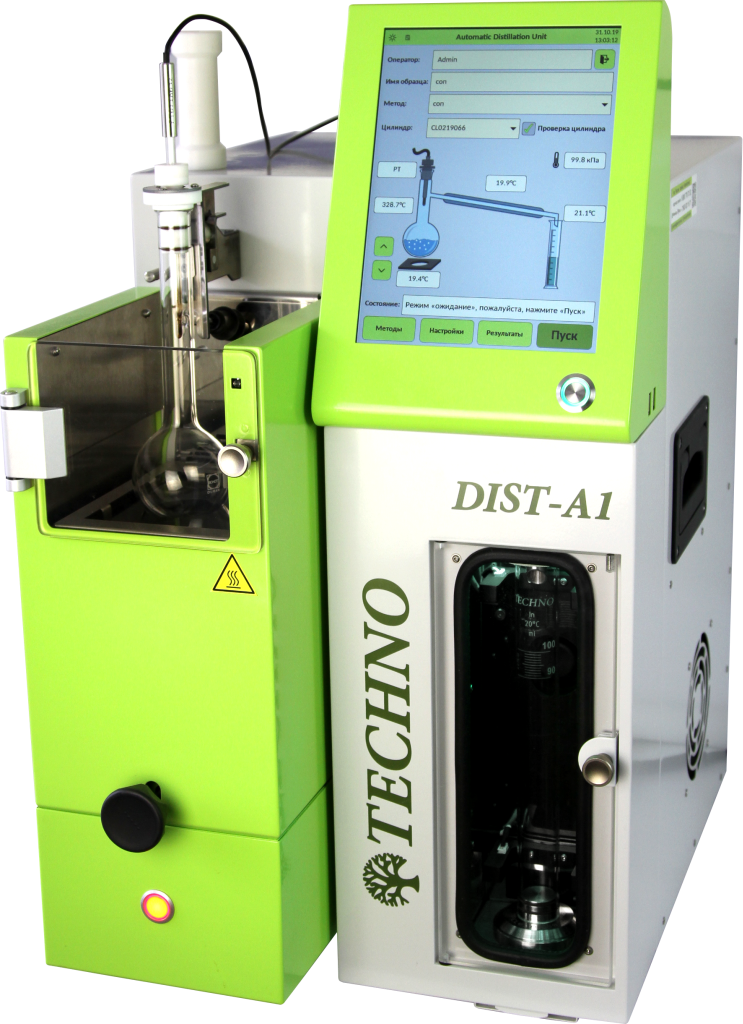ISO 3405
Petroleum products — Determination of distillation characteristics at atmospheric pressure
The scope of the method lies in the fact that the sample is assigned to one of five groups based on its composition and the expected characteristics of volatility with the determination for each group of equipment, the temperature of the refrigerator and the process parameters. 100 cm³ of the test sample is distilled under certain conditions inherent in the group to which this sample belongs, and systematic observations of the thermometer readings and the volume of condensate are carried out. Measure the volume of the residue in the flask and record the loss on distillation. The thermometer reading is corrected for barometric pressure and the data is used in calculations according to the nature of the sample and the requirements of the specification.
Establishes a laboratory method that allows the determination of the fractional composition of light and medium petroleum distillates with an initial boiling point above 0 °C and an end boiling point below 400 °C using manual or automatic equipment; in case of controversy, a manual technique is preferred, unless otherwise indicated.
This method is applicable to petroleum products that contain small amounts of non-petroleum components, but in these cases the precision values do not apply to all cases.
Light distillates include:
- motor gasolines;
- motor gasolines with ethanol content up to 10% by volume;
- aviation gasolines;
- Middle distillates include:
- fuel for jet engines;
- kerosene;
- diesel fuel;
- diesel fuel with a fatty acid methyl ester content of up to 20% vol .;
- heating oil;
- marine fuels that do not contain significant amounts of residual products.
Fractional composition (volatility) of hydrocarbons has a significant impact on their safety and operation, especially in the case of fuels and solvents. Boiling ranges provide important information on the composition and behavior of a petroleum product during storage and use, and evaporation rate is an important factor in the use of many solvents.

